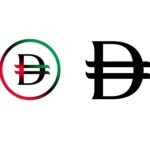The bond trade that some of Wall Street’s biggest banks say will dominate the rest of 2024 is gaining steam before a crucial inflation reading that will help seal the wager’s fate.
The bet — that the US yield curve will normalize toward a steeper slope — is suddenly looking as good as it has in months, with traders eyeing the latest print of the consumer-price index due this week for additional support.
It got an initial boost after President Joe Biden’s June 27 debate performance appeared to ease Donald Trump’s path to retake the White House. In its aftermath, strategists at banks including Citigroup Inc. (C), JPMorgan Chase & Co. (JPM), and Morgan Stanley (MS) have touted the so-called Trump trade. The idea is that the Republican’s policies on tariffs, immigration, and deficits will lead investors to demand higher yields on longer-maturity Treasuries.
The next leg up in the trade came Friday, when fresh signs of a softening job market bolstered expectations that the Federal Reserve will cut interest rates this year, spurring a sharp drop in short-dated yields. One closely watched measure of the yield curve — the gap between 5- and 30-year yields — reached the widest since February after the data, although that move pared on Monday as yields rose across maturities in London trading.
Easing by the central bank is seen as the steepener bet’s principal driver, which heightens the focus on inflation readings. Consumer prices likely rose at the slowest annual pace since January in June, a Bloomberg survey shows. Evidence of further disinflation may remove a major obstacle to the steepener’s success: Fed officials have been signaling that they’re not ready to lower rates.
“The steepening because of inflation, because of fiscal policy, can continue,” said Cindy Beaulieu, chief investment officer for North America at Conning.
The trade was a market favorite around the turn of the year as well, as investors entered 2024 betting on a series of Fed rate cuts. Instead, a resilient economy and sticky inflation derailed wagers on easing. When the US bond market closed on June 27 hours before the debate, the difference between 5- and 30-year yields was about 5 basis points narrower relative to the end of the year. The trade, in other words, was a loser.
While political developments initiated its revival, a more sustainable move requires the Fed to cut aggressively. That would push short-term yields down more than those on longer tenors, producing what traders call a bull-steepening move.





